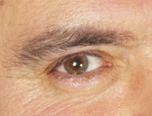Podcast: Play in new window
BOB HIRSHON (host):
The aging eye. I’m Bob Hirshon and this is Science Update.
As we age, the lenses of our eyes start to yellow, which cuts down on the wavelengths of light that can enter the eye. That means teenagers and septegenerians should perceive colors differently. But they don’t. This according to University of Liverpool neuroscientist Sophie Wuerger. She and her colleagues studied color perception in 185 volunteers and found that colors appear the same regardless of age.
SOPHIE WUERGER (University of Liverpool):
The grass remains green whether we are 17 or 77 years of age.
HIRSHON:
They concluded that the brain must be compensating for the age-related yellowing of the lens by gradually recalibrating itself over time.
WUERGER:
It is quite remarkable that we can go through our whole life without having any significant changes in color appearance because our brain helps us and keeps our vision constant.
HIRSHON:
I’m Bob Hirshon, for AAAS, the science society.

